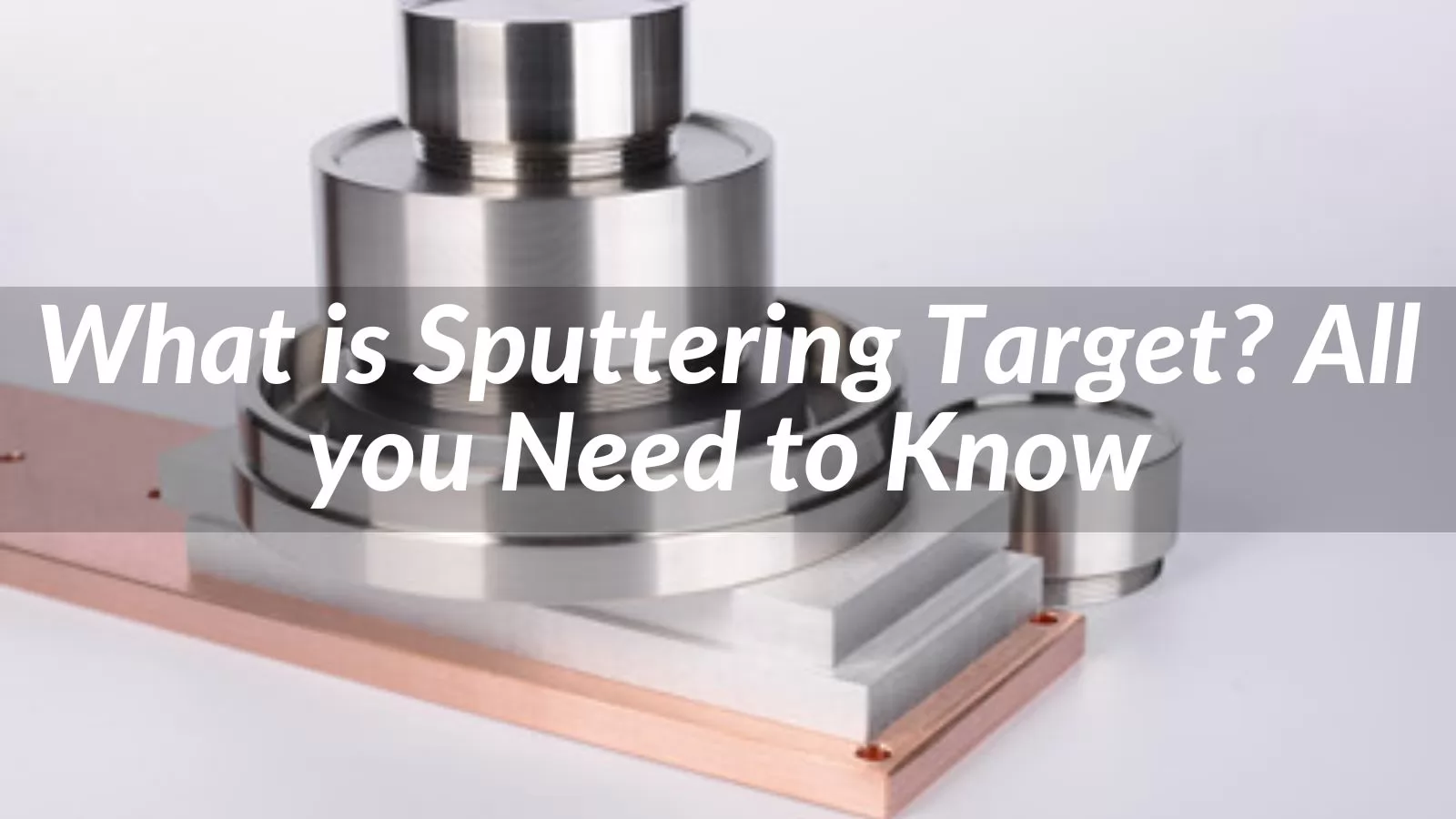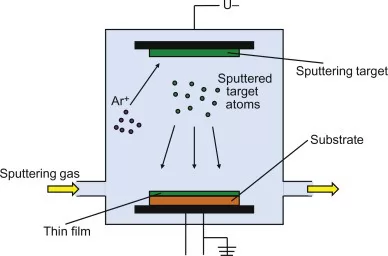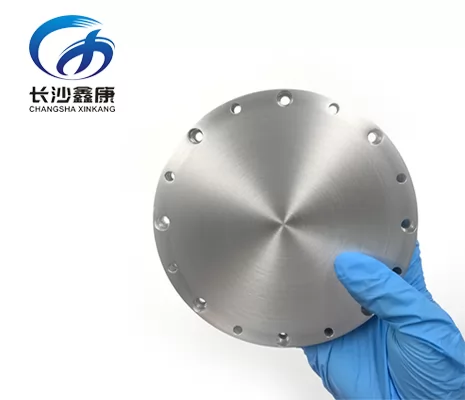


.png)

-
 +86-731-84027969
+86-731-84027969 -

-
 info@xk-sputteringtarget.com
info@xk-sputteringtarget.com



Sputtering targets are composed of a wide range of materials, including metals, alloys, ceramics, and compounds, depending on the desired properties of the thin film to be deposited. The choice of target composition is critical as it directly impacts the characteristics and functionality of the resulting thin film.
Metal targets are one of the most common types used in sputtering processes. They are fabricated from pure metals or metal alloys and offer excellent electrical and thermal conductivity. Metals like gold (Au), silver (Ag), copper (Cu), titanium (Ti), and aluminum (Al) are frequently used as sputtering target materials. These metal targets are ideal for applications such as semiconductor fabrication, display coatings, and solar cells.
Ceramic targets are composed of non-metallic materials, typically oxides, nitrides, or carbides. Examples of ceramic sputtering targets include aluminum oxide (Al2O3), titanium dioxide (TiO2), silicon dioxide (SiO2), and zinc oxide (ZnO). Ceramic targets are known for their high melting points, chemical stability, and dielectric properties, making them suitable for applications in optical coatings, wear-resistant films, and protective layers.

The first step in manufacturing sputtering targets is the careful selection of the material. The material is chosen based on the desired properties of the thin film to be deposited. Factors such as conductivity, composition, purity, and compatibility with the deposition process are taken into consideration.
Once the material is selected, it undergoes preparation. In the case of metal targets, the material is usually in the form of a high-purity ingot. The ingot is then processed through various techniques such as melting, casting, or powder metallurgy to obtain the desired shape and size of the target. Ceramic targets are typically manufactured through powder processing methods like solid-state reaction, sol-gel, or plasma spray.
The prepared material is shaped into the desired target form. This can involve processes like machining, grinding, or pressing. Machining is commonly used for metal targets, where the material is cut or drilled to achieve the desired dimensions and surface finish. Ceramic targets may undergo grinding or pressing to obtain the desired shape and density.
After shaping, the target goes through a finishing process to ensure the required surface quality and dimensional accuracy. This can include polishing, lapping, or chemical treatments. The goal is to remove any surface imperfections or contaminants that may affect the target's performance during sputtering.
Throughout the manufacturing process, rigorous quality control measures are implemented to ensure the targets meet the specified requirements. This includes material analysis, dimensional checks, purity verification, and overall target quality assessment. Targets that do not meet the set standards are rejected to maintain the highest quality standards.
Once the sputtering targets pass the quality control checks, they are carefully packaged to protect them during transportation and storage. Special care is taken to prevent damage or contamination. The targets are then shipped to the customers, ready to be used in their sputtering processes.
The manufacturing process of sputtering targets requires precision, expertise, and adherence to strict quality standards to ensure the production of targets that deliver consistent and reliable performance in thin-film deposition applications.

Sputtering targets are available in various types, each designed to meet specific deposition requirements and applications. Here are some of the commonly used types of sputtering targets:
Metal targets are one of the most widely used types of sputtering targets. They are fabricated from pure metals or metal alloys and offer excellent electrical and thermal conductivity. Metal targets are commonly used for applications such as semiconductor manufacturing, thin-film deposition, optical coatings, and magnetic storage media production. Examples of metal targets include gold (Au), silver (Ag), copper (Cu), aluminum (Al), and titanium (Ti).
Ceramic targets are composed of non-metallic materials, typically oxides, nitrides, or carbides. Ceramic sputtering targets are known for their high melting points, chemical stability, and dielectric properties. They are widely used in applications such as wear-resistant coatings, optical films, and thin-film resistors. Examples of ceramic targets include aluminum oxide (Al2O3), titanium dioxide (TiO2), silicon dioxide (SiO2), and zinc oxide (ZnO).
Alloy targets are sputtering targets composed of a mixture of two or more metallic elements. Alloy targets offer the advantage of tailoring the properties of the deposited thin films by adjusting the composition of the alloy. They are used in a range of applications, including magnetic recording media, superconducting films, and corrosion-resistant coatings. Examples of alloy targets include nickel-chromium (NiCr), titanium-aluminum (TiAl), and cobalt-chromium (CoCr).
Composite targets are sputtering targets made by combining different materials or layers to achieve specific film properties or multilayer structures. They are often used in applications where precise control over film composition and structure is required. Composite targets find applications in areas such as optical filters, solar cells, and integrated circuits.
The semiconductor industry extensively utilizes sputtering targets for the deposition of thin films in the fabrication of integrated circuits (ICs) and other semiconductor devices. Sputtered films are used for applications such as barrier layers, interconnects, dielectric layers, and metal contacts. Metal targets like aluminum (Al), copper (Cu), and tungsten (W) are commonly employed in semiconductor manufacturing.
Sputtering targets play a critical role in the production of optical coatings for various applications. They are used to deposit thin films on optical components, such as lenses, mirrors, filters, and waveguides, to enhance their performance in terms of reflectivity, transmittance, anti-reflection, and color control. Materials like indium tin oxide (ITO), titanium dioxide (TiO2), and silicon dioxide (SiO2) are widely used in optical coating applications.
The energy sector utilizes sputtering targets for applications such as solar cells, fuel cells, and energy storage devices. Sputtered films are used to create transparent conductive layers in solar cells, enabling efficient light absorption and charge transport. Materials like indium tin oxide (ITO) and aluminum-doped zinc oxide (AZO) are commonly employed as targets in solar cell manufacturing.
Sputtering targets are vital for the production of displays, including flat panel displays (LCD, OLED), touch screens, and flexible displays. They are used to deposit transparent conducting films, color filters, reflective layers, and electrode materials. Indium tin oxide (ITO), indium gallium zinc oxide (IGZO), and aluminum (Al) are commonly used targets in display technologies.
Sputtering targets are employed to create wear-resistant coatings on various surfaces, including cutting tools, molds, and automotive parts. These coatings enhance hardness, wear resistance, and corrosion resistance. Additionally, sputtering targets are used for decorative purposes, such as in the production of decorative films on jewelry, watches, and architectural glass.
Sputtering targets play a fundamental role in the process of thin-film deposition through sputtering. They are essential components used in various industries such as semiconductor manufacturing, optics, energy, and electronics. Sputtering targets are meticulously manufactured with high precision and are available in different types, including metal targets, ceramic targets, alloy targets, composite targets, and customized targets.
If you want to know more, please contact us!
.png)

.png)
.png)
Top 10 Sputtering Target Manufacturer in World 2025
Sputtering is a physical vapor deposition (PVD) process used for depositing materials onto a substrate, by ejecting atoms from sputtering targets and condensing the ejected atoms onto a substrate in a high vacuum environment.
How to Make Sputtering Target?
Making a sputtering target involves several steps to create a high-quality material that can be used for thin film deposition processes. Sputtering targets are typically used in physical vapor deposition (PVD) techniques to deposit thin films onto substrates.
Top 10 Custom Sputtering Target Manufacturers in 2025
Custom sputtering targets are designed to meet the specific needs of a particular application. They can be made from a variety of materials, with different shapes and sizes. Custom sputtering targets are often used in research and development, as well as in industrial applications.
Top 10 Sputtering Target Suppliers In Europe 2023
Sputtering targets are critical in various industries including semiconductor manufacturing, display technology, solar cells, optical coatings, magnetic storage media, aerospace, automotive and research.
.png)